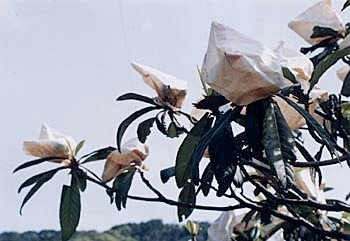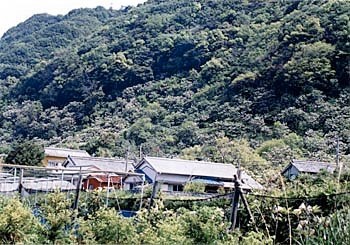































One interesting sight along the way are these trees with bagged "biwa" fruit. A biwa (no, not a lake or a musical instrument) is about the same size and color as an apricot, with a very delicate flavor. Shikoku is one of the main producing areas, as you'll see in the photo below.
If you look carefully, you'll see that the entire moutain is covered in tiny apricot-colored dots, each of which represents a single fruit that has been bagged by hand. And this scenery goes on for miles and miles and miles. Meet Japan's legendary labor-intensive agriculture. This might help explain why fruit is often so expensive in Japan.



